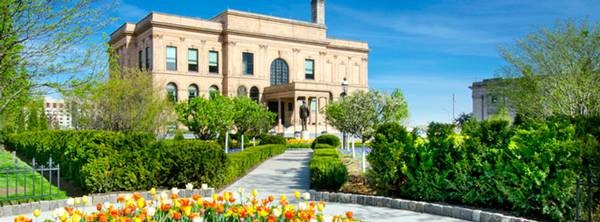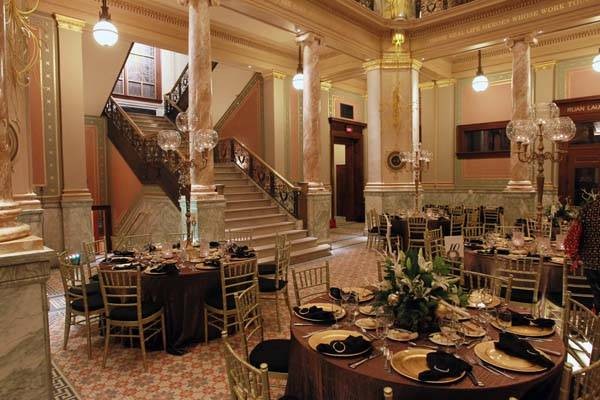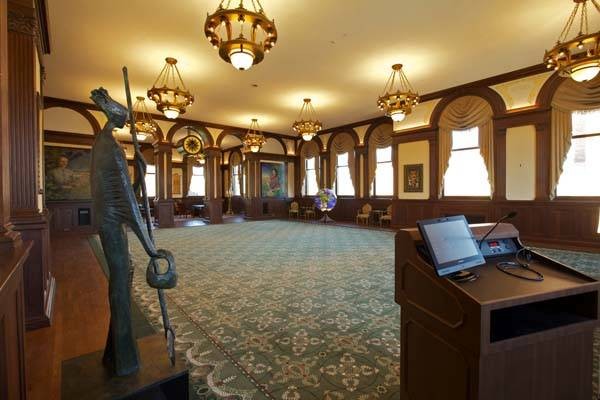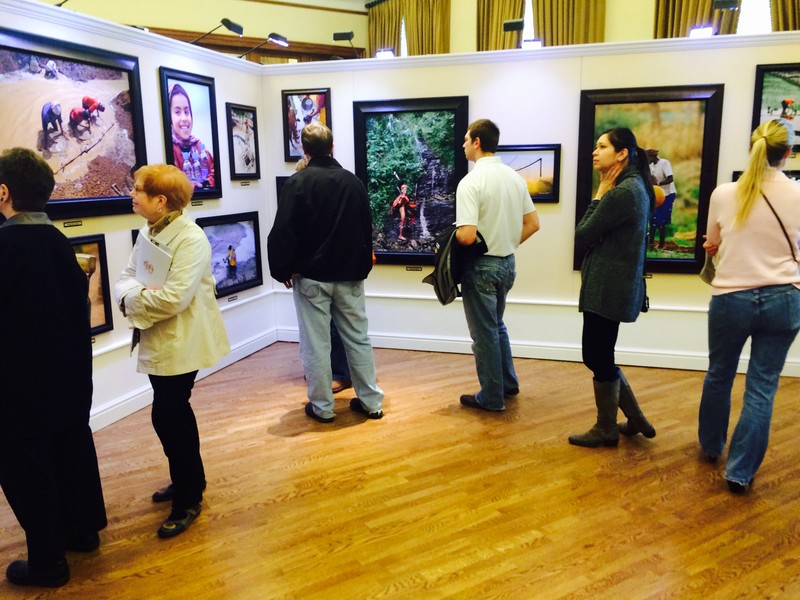World Food Prize Hall of Laureates
Introduction
Text-to-speech Audio
Images
World Food Prize Hall of Laureates Building

The dining room showcases the building's Beaux-Arts style

View of the Ruan Laureate Room

Open house at the World Food Prize Hall of Laureates

Backstory and Context
Text-to-speech Audio
History of the World Food Prize Hall of Laureates
The location of the World Food Prize Hall of Laureates in the old Des Moines Public Library building dates back to the City Beautiful Movement in the late 1890s and early 1900s. As part of the City Beautiful Movement, citizens and public officials sought to beautify the Des Moines Principal Riverwalk along the river, and one building that stood out for its Beaux-Arts style was the Des Moines Public Library.
This building opened in 1903, and was listed on the National Register of Historic Places in 1977. The Library continued in the building until 2006, when it moved to a larger and more modern space. The Norman E. Borlaug World Food Prize Hall of Laureates moved in shortly afterwards.
At the time the World Food Prize took the building, it was in dire need of restoration, and the World Food Prize took on a nearly $29.8 million capital project to restore it.
Within the building, visitors can discover a stunning Beaux-Arts style that is both classy and engaging, and the museum and exhibit surroundings celebrate a spirit of giving. Thus, with the help of the World Food Prize, this historic Iowa building has been fully restored and preserved.1
Since the World Food Prize began in 1987, some of the honoree’s achievements have included the founding of Operation Flood, the development of “miracle rice,” development of Africa's first sorghum hybrids that are resistant to drought and witchweed, implementation of micro-irrigation in arid and dry land regions, and many others.2
Touring the Building
One of the most attractive aspects of the Hall of Laureates is the world-class museum that showcases a variety of exhibits focused on agriculture and hunger. The Ruan Laureate Room tells the story of the World Food Prize as well as the history of agriculture. The Agricultural Leader Squinches in this room feature some of the greatest agricultural leaders throughout human history, while the stained glass globe illustrates the 12 locations around the world where food production and agriculture originated.3
On the Mezzanine level of the building, the Iowa Gallery relates the story of Iowa’s own extensive agricultural and humanitarian heritage. After a day of exploring the various rooms in the museum as part of a free guided or self-guided tour, visitors are encouraged to take a stroll through the gardens. These gardens were designed by the nationally recognized landscape architect Doug Hoerr, and they offer a serene refuge along the Des Moines river.4
